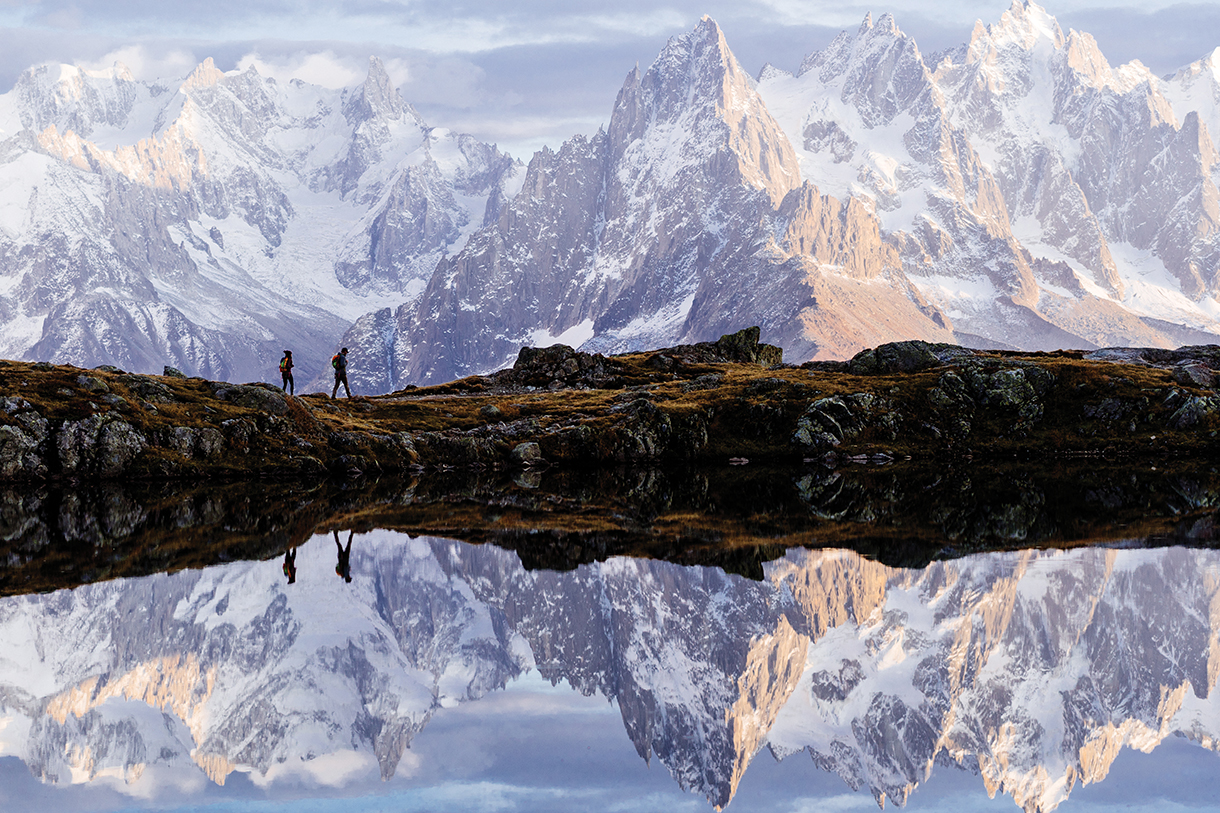
Hiking the Alps
Sure, it’s physically demanding, but when it comes to nonstop, jaw-dropping views and well-earned pampering, the Tour du Mont Blanc is a worthy off-the-grid destination.
PHOTOGRAPHED BY CHRIS BRINLEE JR.
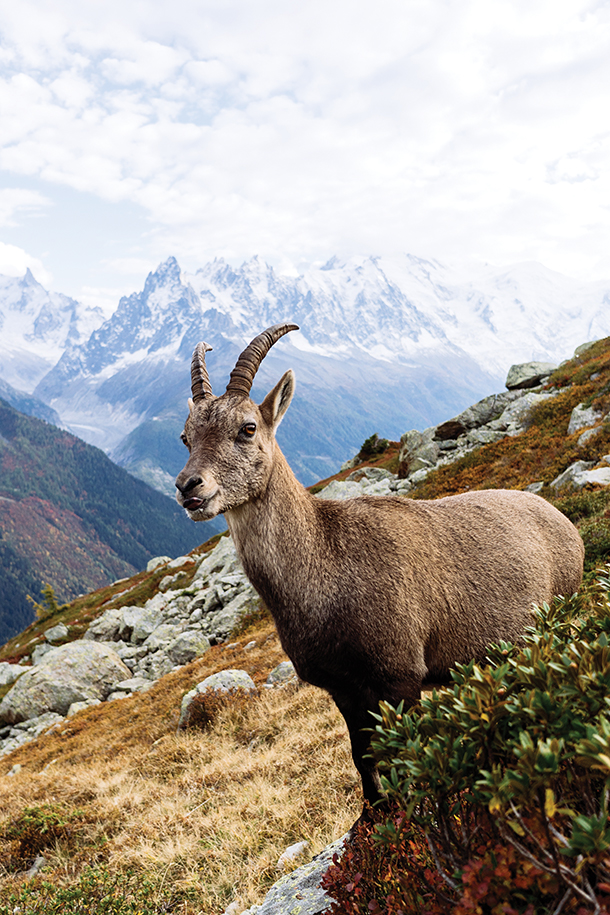
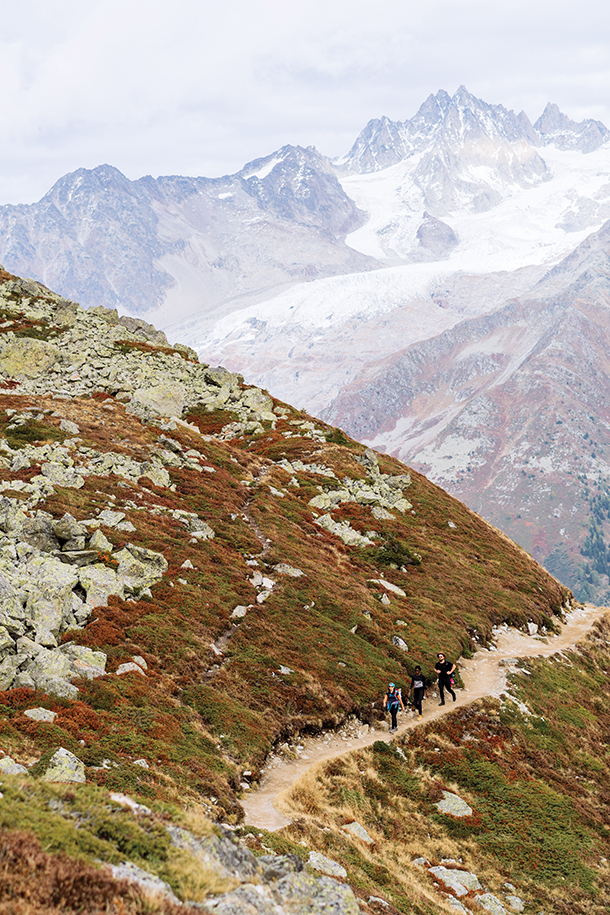
In fact, while it is a highly active and physically demanding endeavor, there is no roughing it in any sense. The route passes through some of Europe’s greatest ski towns, with the option for luxury lodging, spa treatments, and delicious meals, from local specialties such as fondue and risotto to Michelin-starred gourmet dinners. It is an ideal combination of exercise, nature, and well-earned pampering. The Alps are gorgeous any time of year, but in spring and summer the meadows of wildflowers offer a natural firework display of brilliant colors against the contrast of green pastures and backdrop of jagged, snow-covered peaks.
The TMB loop passes through three countries (France, Switzerland, and Italy) and is one of the longest-established major hiking trails in the world, a circumnavigation of Western Europe’s highest mountain. Besides omnipresent views of the namesake peak, there are many other prominent Alpine summits, huge blue glaciers, verdant valleys, overlooks to the charming ski towns, cliffs, waterfalls, and on some days, you can g actually hike above the clouds for dramatic views you would usually only see from an airplane window. The terrain varies among flat trail, steeps, switchbacks, long-exposed ridges with sweeping views, suspension bridges across ravines, and pastures full of dairy cows, sheep, and sleepy St. Bernards. In the Alps, hikes often include legs on cable cars, gondolas, or funiculars, and the TMB is no exception, adding another unique level of sightseeing. You cross international borders marked by humble stones on high mountain passes, and eat leisurely lunches seated on rock outcroppings watching ibex and marmots at play. On this trip you basically get a little—or a lot—of everything worth hiking for.
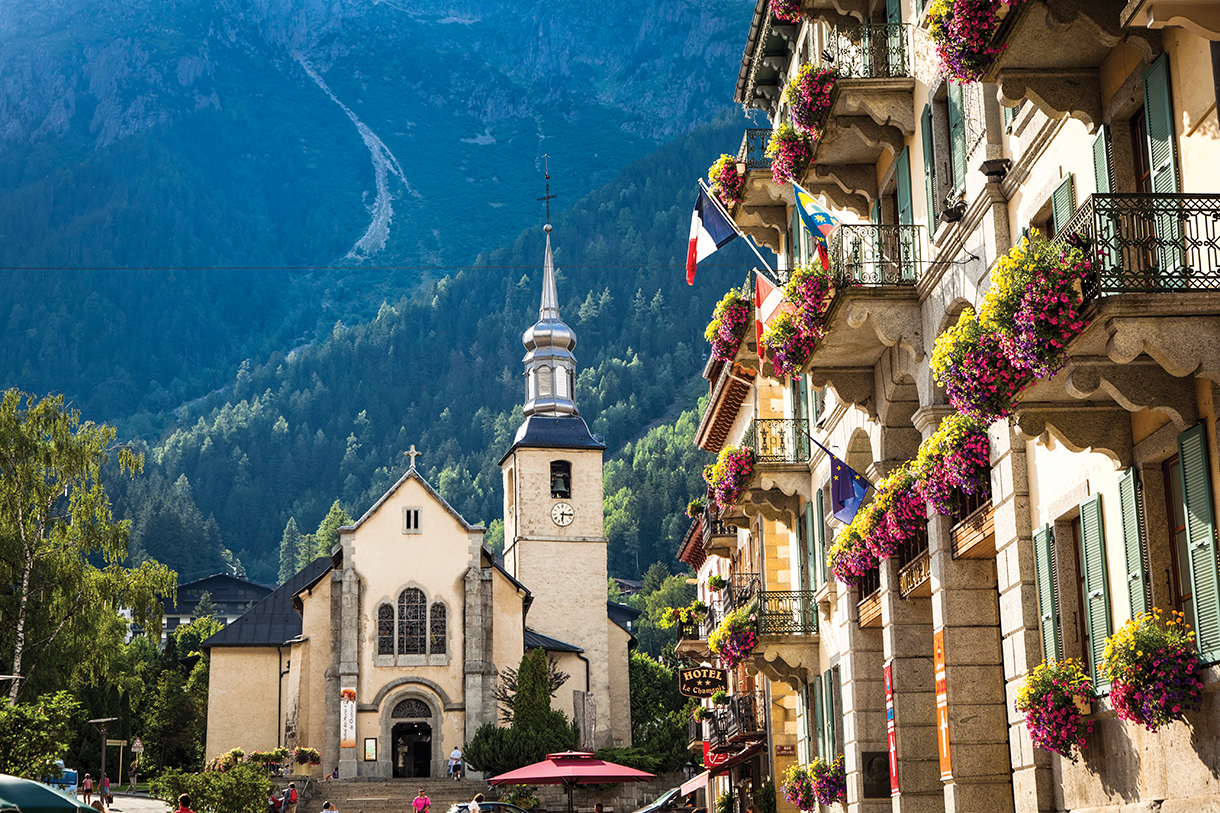
“Every night we hiked down to a town, like Italy’s Courmayeur to enjoy gelato,” said Dr. Katie Noyes, a physician and active outdoor lover who lives in Jackson, Wyoming, with the Tetons as her own backyard. She did the TMB with her father a couple of years ago, as she fondly recalls. “In the middle of the hikes, we would run across a well-maintained refugio selling espresso and cake. You don’t usually find that at high elevations in the United States.” Refugios are the Italian-inspired take on mountain huts, always with patios boasting stunning views and often with full-service restaurants (and full bathrooms). Whether you stop in for a plate of homemade pasta or a snack, an espresso or cold beer, you will find this very civilized—and very Italian—approach to the midday hiking break in improbable locations, ones that often require resupply by helicopter.
No matter what active travel specialist you book with, just about all TMB itineraries start and end in the French ski town of Chamonix, and (like the dahu) go in the same direction, counterclockwise. There are usually multiple daily hiking options between trailheads, and you can complete the circumnavigation (spanning 80–110 miles) in 8 to 12 days by walking around 10 miles per day. If the map of the hike were a clock, Chamonix would sit at 9 o’clock, and you hike south through France to the Italian border (6 o’clock) then back north on the east side of Mont Blanc to Switzerland (12 o’clock), and finally south again to compete the loop.
Because Mont Blanc was the first summit explorers set out to climb for climbing’s sake (conquered in 1786), Chamonix is the gateway, the town considered the world’s birthplace of mountaineering. Its well-respected Chamonix Guides Company (chamonix-guides.com) is the world’s oldest mountain guide service, since 1821. Unlike the United States, outdoor guiding is considered an elite profession in Europe and requires extensive training and certification, and many of the highly experienced guides here have been leading hikes on the TMB for decades. You can hire guides directly through the company and make all your own hotel and transfer arrangements, but most travelers use a full-service, specialized active tour operator. Most quality tour operators hire these local experts, and the better outfitters get their pick of staffers.
Béatrice Mugnier is one of the top company guides who has led trips for tour operators, including National Geographic Expeditions (nationalgeographic.com) and MT Sobek (mtsobek.com). Born in Chamonix to a famous family of mountain climbers, she has been leading the circuit for more than 30 years, and in the off-season teaches skiing here, in between guiding expeditions in Nepal and Morocco’s Atlas Mountains. “Lots of tour companies offer guided, supported TMB experiences, and the route is pretty much the same,” says Mugnier, “but the best ones offer a more luxurious alternative with better food, and especially better lodging.”
For American outfitters, MT Sobek, REI Experiences (rei.com), Wilderness Travel (wildernesstravel.com), and Alpenwild (alpenwild.com) are considered among the best operators regularly offering the Tour du Mont Blanc. Many travelers who have done epic hiking vacations elsewhere go searching for the next great trip and end up on the TMB. A Minneapolis heart surgeon and his wife, also a doctor, both avid hikers, chose this trip after previous hiking vacations in Patagonia and the Himalayas. Another participant, a San Diego ophthalmologist, booked it after enjoying a guided trip in China.
Differences among trips are found in the lodging, guides, food, inclusions, and attention to detail. Top high-end outfitters like MT Sobek, Alpenwild, and REI Experiences do the important little things, like asking customers about food allergies or preferences, then connecting with restaurants before every meal to make sure these are taken care of, whereas budget operators often offer no choices. Better trips are turnkey from the gateway Geneva airport, rather than leaving guests to make their own way to Chamonix, using the best hotels along the way, and including almost all meals. While some trips feature simple dinners in hotels, guests of top tour operators dine at standout local restaurants.
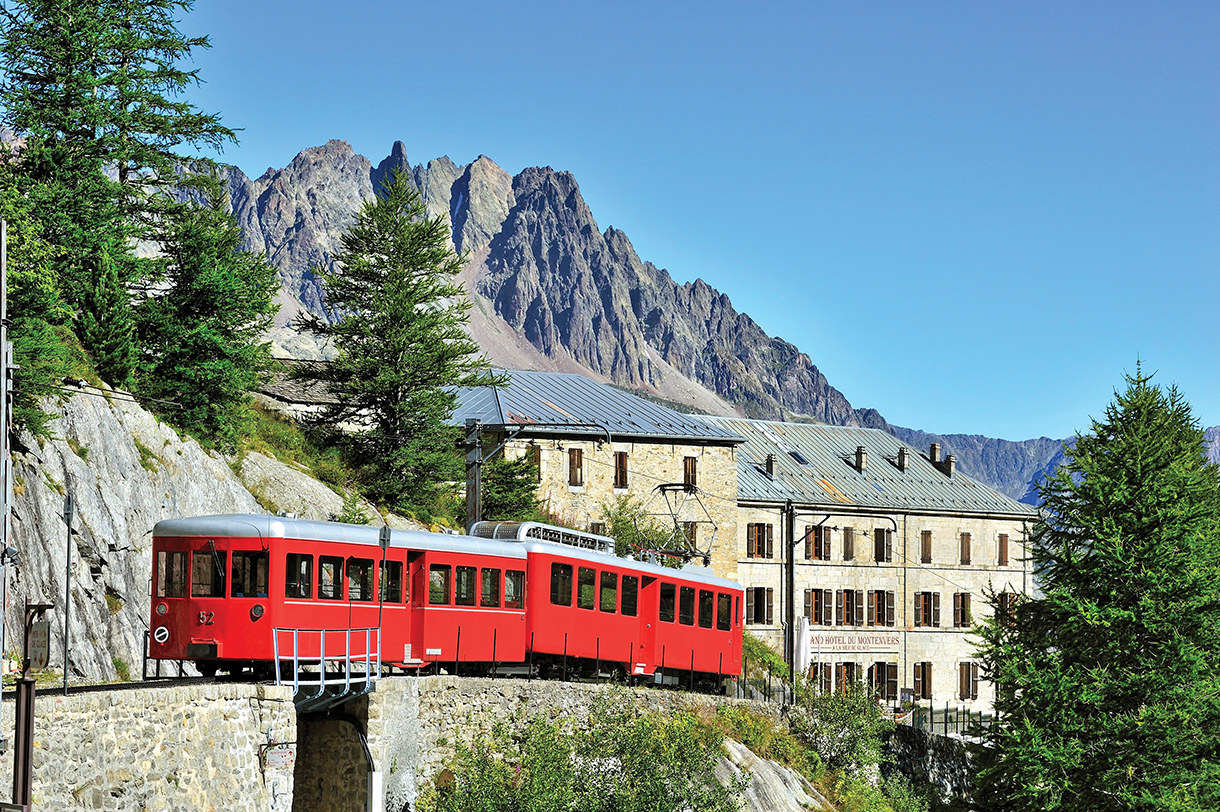
As a result, a more luxurious trip on the TMB entails waking every morning and enjoying a hearty and delicious breakfast. Then each hiker packs a lunch from an ample spread of local specialties that change daily, and all you need to carry is a day pack with water, lunch, layers, and rain gear. The rest of your luggage waits in your room at the next hotel. Each group has two mountain guides, with multiple options for start, finish, and length (depending on the day’s difficulty).
This is one of the key advantages of going with local experts, as Mugnier explains: “There is no one TMB. It depends whether you are carrying everything or have luggage, whether you stay in mountain huts, camp, or use hotels. All along the way there are options and extensions and different routes, and we take into account the weather and ability of the group every day when selecting options.”
With van-equipped trips, there is even the possibility of skipping a day on the trail and riding to the next hotel if you get tired, sick, or face a day of pouring rain. But ideally you want to complete the circle and not miss even a single day, as each is different, but all are gorgeous and memorable.




